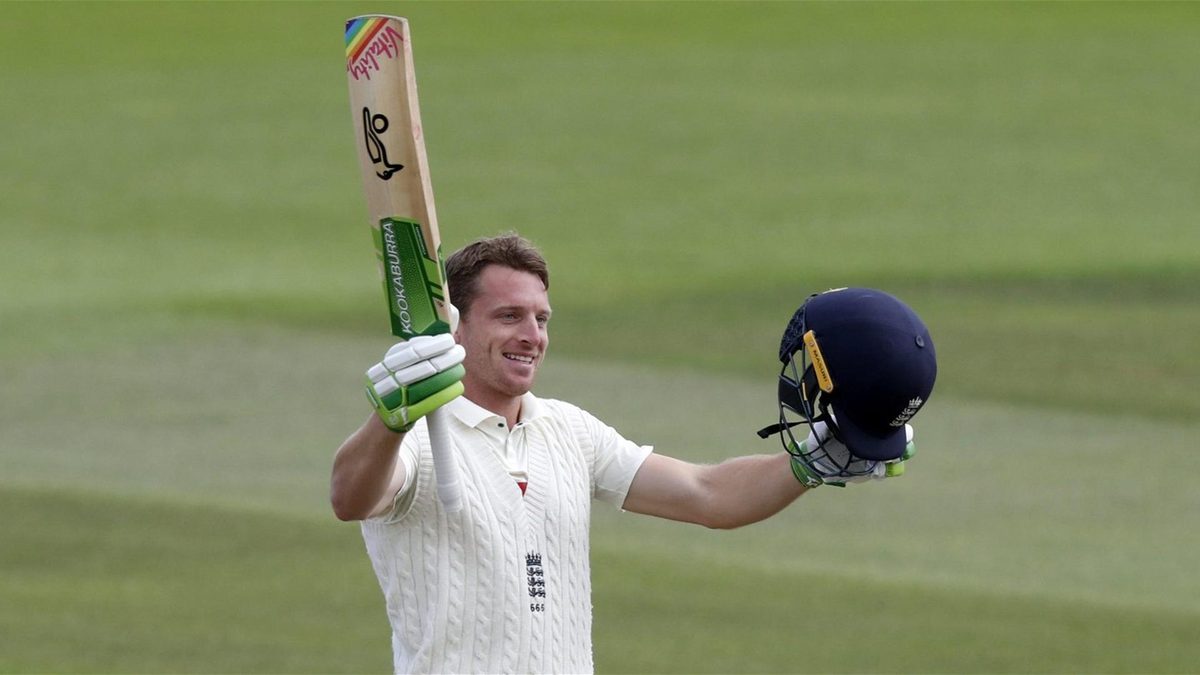
Ben Gardner argues that, despite Jos Buttler being better suited to batting at No.6 than No.7, England should resist the temptation to promote him permanently.
This article was brought to you in association with Wisden’s official betting partner, bet365 . For all the latest England vs Pakistan odds and in-play markets, visit bet365
[bet365]
At what point does a statistical quirk become a genuine talking point? Largely it depends on what side of the argument you sit on to begin with. Zak Crawley making a new Test-best each time he batted in his first five Test innings was evidence of his propensity to improve for the believers, but little more than a coincidence for the naysayers. For a time, Joe Root’s poor conversion rate of 50s to 100s was the only thing holding him back from greatness, excepting that it was his propensity to get to 50 in the first place that made him so brilliant.
So what to make of Jos Buttler, who, after making a cross-format career-best 152 in the third Test against Pakistan, now averages a shade under 50 at No.6, but just a tick over 30 at No.7. How much difference can one position in the batting order make?
In terms of perception of role, the gap between No.6 and No.7 is arguably the biggest in the batting order. The former is right in the engine room, a place reserved for players with designs on being a proper batsman, whereas the latter comes towards the end of the innings, where keeper-batsmen and all-rounders try and eke out whatever runs they can rather than setting their sights on anything higher.
But what’s odd about Buttler, taking into account his otherworldly white-ball exploits, is that it’s that latter role that he seems to struggle in; change the colour of the ball and the kit, and there’s no-one better at whacking a few when time is running out.
Maybe in a way it’s that potential to wrest the initiative in an instant that’s been holding him back. When your options are going on the charge and taking 20 from an over, or shepherding the tail, putting away the bad ball, and maybe nudging 20 from 10 overs, you can see why a player with Buttler’s skill-set might opt for the former, even when the latter is the higher percentage option.
Even when, back in 2018, he did have success at No.7, he often had the comfort of having two of Woakes, Curran, Rashid or Moeen below him. Since then, those four have either left the side or lost form, and he’s had to try and do something different, and it hasn’t worked.
The Test version of Buttler, it seems, likes being a proper batsman, and thrives on constructing a partnership, harmonising with whoever’s at the other end, whether it’s counterattacking with Chris Woakes or handing the strike over to a rampant Crawley. His Southampton supporting act was a Test innings glorious in its normalcy, with Buttler steadying as he went, each fifty slower than the last as he realised he had all the time in the world.
There were moments of aggression, such as when he smashed 16 off a Yasir Shah over to move from 27 to 43 in a flash, but really the defining passage of the innings came between lunch and tea on day two, when Buttler scored 27 runs and no boundaries as Crawley crashed 81 before being stumped. England had gone from being in charge, through dominant, to out of sight. As Buttler said after stumps, “When I’m playing well, I’m leaving well”. It felt like he’d never left better.
Still, even if Buttler’s best position is at No.6, that hardly solves the issue, since when Ben Stokes is back and bowling-fit, there isn’t really a space there. You might argue that England should just make room, since he’s too talented a player not to be making the most out of, and the option of including Ben Foakes as keeper is tempting, especially for a tour of India where glovework could be crucial.
But the only semi-plausible options, after Crawley’s magnum opus, are leaving out Ollie Pope, averaging 27 for the summer but hyper-talented, or Rory Burns, who has similarly sketchy recent form, has looked iffy against spin and probably doesn’t have a ceiling as high as Pope’s, but is also allowing Crawley to bed in at No.3 and Root to stay at No.4.
England have come unstuck in the past trying to fit experienced players, the likes of Jonny Bairstow, Moeen Ali, and Buttler himself, into a lower middle order that should be reserved for bedding in prospects, most farcically when a 20-year-old Pope had to bat at No.4 on Test debut, having never done so before in his first-class career. They have avoided the temptation to tinker recently and are beginning to reap the rewards. They would do well to continue to do so.
Perhaps then the solution is not a change of position but a change in mindset. When batting with the tail, rather than looking at the bunny at the other end and the message on his bat handle, thinking ‘F*** it’, and swinging for the fences, maybe he needs to treat whoever he’s batting with equally and try and construct an innings however he feels is best. Buttler was recalled as England’s game-changer, the player who could mould any match to his will. Even if he’s not that, it doesn’t mean he’s not worth persisting with.








